Ongoing Projects
1. Investigating the ruminal metagenome of grass and forage-fed bison to uncover metabolic activities that impact the efficiency of plant fiber utilization
Principle Investigators.
- Dr. Benoit St-Pierre, South Dakota State University, Department of Animal Science
- Dr. Carter Kruse, Turner Institute of Ecoagriculture
Graduate Student.
- Anlly Miley Fresno Rueda, PhD
Rationale. Bison have the ability to maintain better than domestic grazers on forage of poor quality. Since they are responsible for digesting feed, rumen symbiotic microorganisms in bison may be capable of extracting more out of plant fibers. Consistent with this hypothesis, the Institute has determined that rumen bacterial species from bison are very different from their counterparts in domestic grazers, suggesting that they may be more metabolically efficient. In this context, this research primarily aims to use a metagenomics approach (high throughput scale sequencing of rumen microbial DNA) to elucidate the metabolic functions of bison rumen bacteria that are responsible for digesting plant fibers. Gaining a deeper understanding of how rumen bacteria from bison are better at utilizing feed is a necessary first step in developing innovative strategies to improve bison production on pasture, and may lead to other improvements in the nutritive quality of bison products.
2. Local and Translocated dataset of bison body mass, age, sex across latitude at Turner ranches through the last two decades
Principle Investigators
- Dr. Jeff Martin, South Dakota State University, Center of Excellence for Bison Studies
- Dr. Carter Kruse, Turner Institute of Ecoagriculture
Graduate Student.
- Hayden Wolfe, MS
Rationale. Long-term observational datasets at multi-decadal scales are important for improving our understanding of slow processes at work, such as climate change and management strategies. We know that asymptotic body mass of bison varies with sex and decadal measures of temperature and drought, but what remains unclear is the effect of management style and translocations on growth rate and body mass. The concept is that climate, environment, and management type affect animal allocation of energy for growth. This research is using Turner Ranches, including the Institute, dataset of bison traits such as body mass, sex, location, translocation, and management (broadly, cow/calf, feeding regime, grazing, culling, etc.) to model differential growth rates, longevity, pregnancy rates, sex ratios, and herd demographics. This work will improve our understanding of how male and female bison adapt to local environments by adjusting growth rates to match local conditions (e.g., climate and forage) and allow better prediction of how bison might respond and their management need to adapt to changing conditions in the future.
3. Effect of a mineral drench on yearling bison health and performance
Principle Investigators.
- Dr. Jeff Martin, South Dakota State University, Center of Excellence for Bison Studies
- Dr. Tom Bragg, Turner Institute of Ecoagriculture
- Dr. Robert Sager, Medicine Creek Bovine Health Solutions and Consulting
Rationale. Morbidity and mortality of bison associated with outbreaks of Mycoplasma bovis has increased in prevalence, severity, and impact in recent years, leading to growing research broadly focused on cause, early detection, transmission, pathology, management, and treatment of the disease in bison. In addition to concerns about animal welfare, many bison producers have suffered significant economic loss, including at the Institute’s McGinley Ranch. Much is unknown about this disease in bison. There is some limited information that an oral mineral drench supplement of cobalt, zinc, selenium, and copper improves the health and performance of yearling beef cattle, thus we proactively administered this drench to yearling bison at McGinley Ranch to assess effects on weight gain, parasite loads, other disease titers in blood serum, and herd response (e.g., infection rate) to any unplanned mycoplasma event that might occur by chance over the course of the study. If proven effective this mineral drench could be a relatively inexpensive proactive treatment to reduce the severity of a mycoplasma outbreak or improve health and performance in yearling bison.
4. Differences in female and bull bison behavior and resource selection within a Sandhills mixed-grass prairie
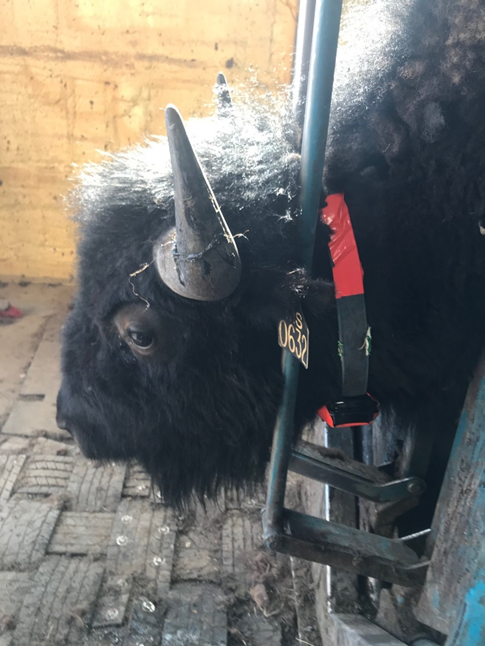
Principle Investigators
Dr. Jamie Brennan, South Dakota State University, Center of Excellence for Bison Studies
- Dr. Carter Kruse, Turner Institute of Ecoagriculture
- Tyrell McClain, Turner Institute of Ecoagriculture
Rationale. Quantifying grazing behavior and locations of free ranging animals can be difficult, especially on extensive rangelands. Remote tracking with GPS technology has tremendous potential to study bison grazing selection and use patterns on the landscape. Commercially available wildlife tracking devices have traditionally been used to monitor wildlife movement, but are expensive and often cost prohibitive for researchers and managers, often at the expense of limiting sample size and thus knowledge gained. Most studies to date in bison have examined movement patterns and resource selection using GPS fix intervals of one to several hours; GPS collars with higher temporal resolution (30 minute) have been used to study bison habitat selection and spatial variability in Yellowstone National Park. While these studies highlight the benefit of studying movement and selection across larger landscapes to better understand bison ecology, these devices lack the temporal precision necessary to accurately predict behavior (e.g., grazing, resting, walking). In addition, the majority of bison tracking research has focused on wild free or semi-free ranging animals with little work conducted on selection of bison managed as livestock such as at the Institute. Most grazing management recommendations are based on observing cattle behavior and use with little to no information specific to bison. Understanding spatial variability of bison grazing patterns within pastures and seasonal shifts in selection can help better develop grazing strategies unique to bison producers to improve rangeland health and animal production.
5. Management of Nebraska Sandhills wet meadows: impacts on soil health and biotic communities
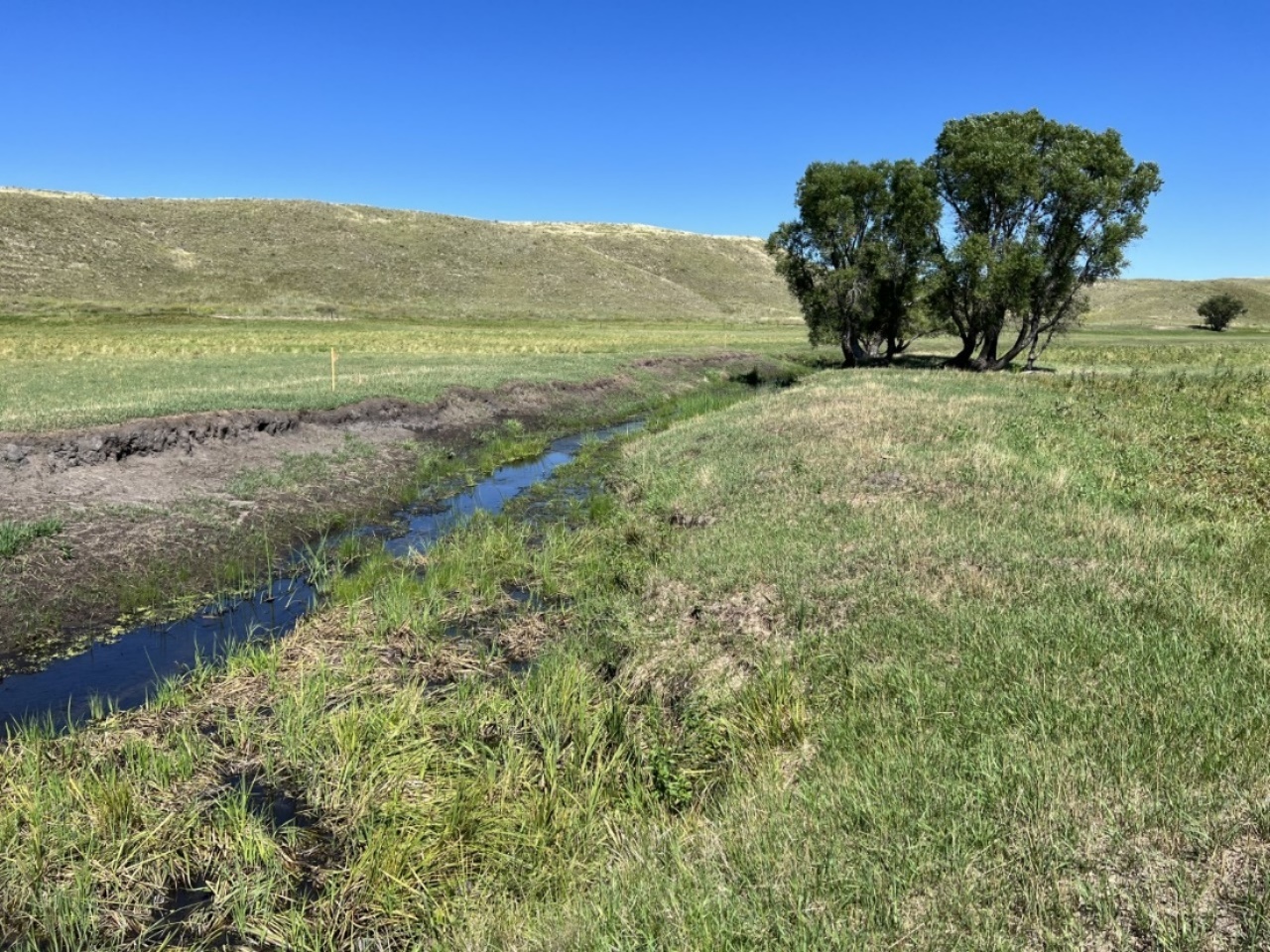
Principle Investigators
- Dr. Craig Davis, Oklahoma State University
- Dr. Sam Fuhlendorf, Oklahoma State University
- Dr. Carter Kruse, Turner Institute of Ecoagriculture
- Gerry Steinauer, Nebraska Game and Parks Commission
Graduate student.
- Nathan Moore, MS
Rationale The Nebraska are considered the largest grass-stabilized dune system in the Western Hemisphere. A unique feature of these grasslands is the variety of wetland systems (e.g., depressions, shallow lakes, fens, and wet meadows) interspersed throughout valley bottoms between dune formations. Although these wetlands occupy approximately 10% of the land area in the Sandhills, they are critical resources that provide important ecosystem services such as flood attenuation, groundwater recharge and discharge, water filtration and storage, carbon storage, forage production for livestock, and habitat for a wide diversity of plant and animal species, Since the early 1900’s, estimated wetland losses in the Sandhills have been as much as 46%, with most losses attributed to draining by surface ditches. Ditching disrupts the natural hydrology of wet meadows and can have significant impacts to the ecological integrity of wet meadows by facilitating the invasion of non-native plants, shifting the plant community composition, and increasing decomposition rates of organic matter. The Institute is interested in restoring wet meadow systems where practicable. Wet meadow restorations typically involve restoring the hydrology (i.e., re-connecting the groundwater to the hydrological cycle of wet meadows) by ditch-filling and re-establishing historic surface flow patterns, but these types of restorations can be challenging because of limited baseline data on the influence of hydrology on wet meadow plant communities, soils, and nutrient storage and cycling. Further, the role that current and past land-use (e.g., different grazing systems, prescribed fire, haying, and no disturbance) practices play in influencing vegetation communities, soil structure, and nutrient storage and cycling in wet meadows is also not well understood. Without a clearer understanding of these relationships, it is difficult to assess the condition of wet meadow restorations as well as set achievable targets for successful wet meadow restorations and guide future management and restoration strategies for wet meadows.
6. Mammalian and herptofauna inventory of the Z Bar Ranch with notes on natural history
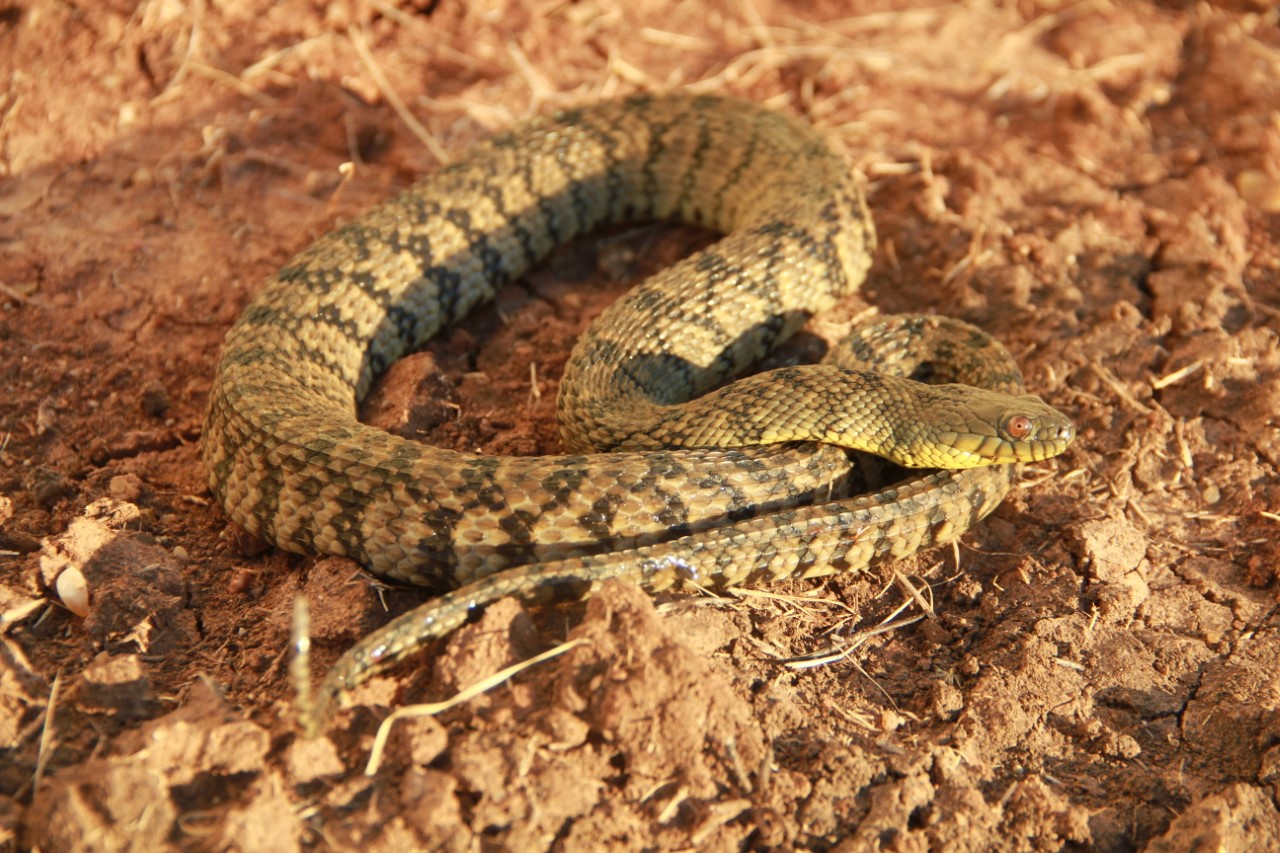
Principle Investigators
- Dr. Keith Geluso, University of Nebraska Kearney
- Dr. Carter Kruse, Turner Institute of Ecoagriculture
Rationale The Gypsum (aka Red) Hills of south-central Kansas represent a rugged landscape of mesas and bluffs, with eroded canyons and red soils. The tall and mixed grass prairies intersect here and the landscape contains small rivers and streams that that together with the topography provide a diversity of habitats, including grasslands, wetlands, forested patches, and areas of sandy alluvial soils. Additionally, due to a layer of gypsum in sedimentary substrata, the area also contains several caves. Subsequently, the Gypsum Hills region has a diverse vertebrate fauna, where many species reach distributional limits and include a number of taxa considered Species of Conservation Need in Kansas. This inventory of mammals and herpetofauna on the Z Bar Ranch by the Institute will provide a benchmark for understanding which species reside on the ranch, seasonality in which they occur and reproduce, and habitats used by them, building a foundation for future research and conservation work. Some early, undergraduate student lead outcomes from this work can be reviewed at here and here.
7. Population dynamics and life history characteristics of Rio Grande cutthroat Trout in the upper Rio Costilla watershed, New Mexico
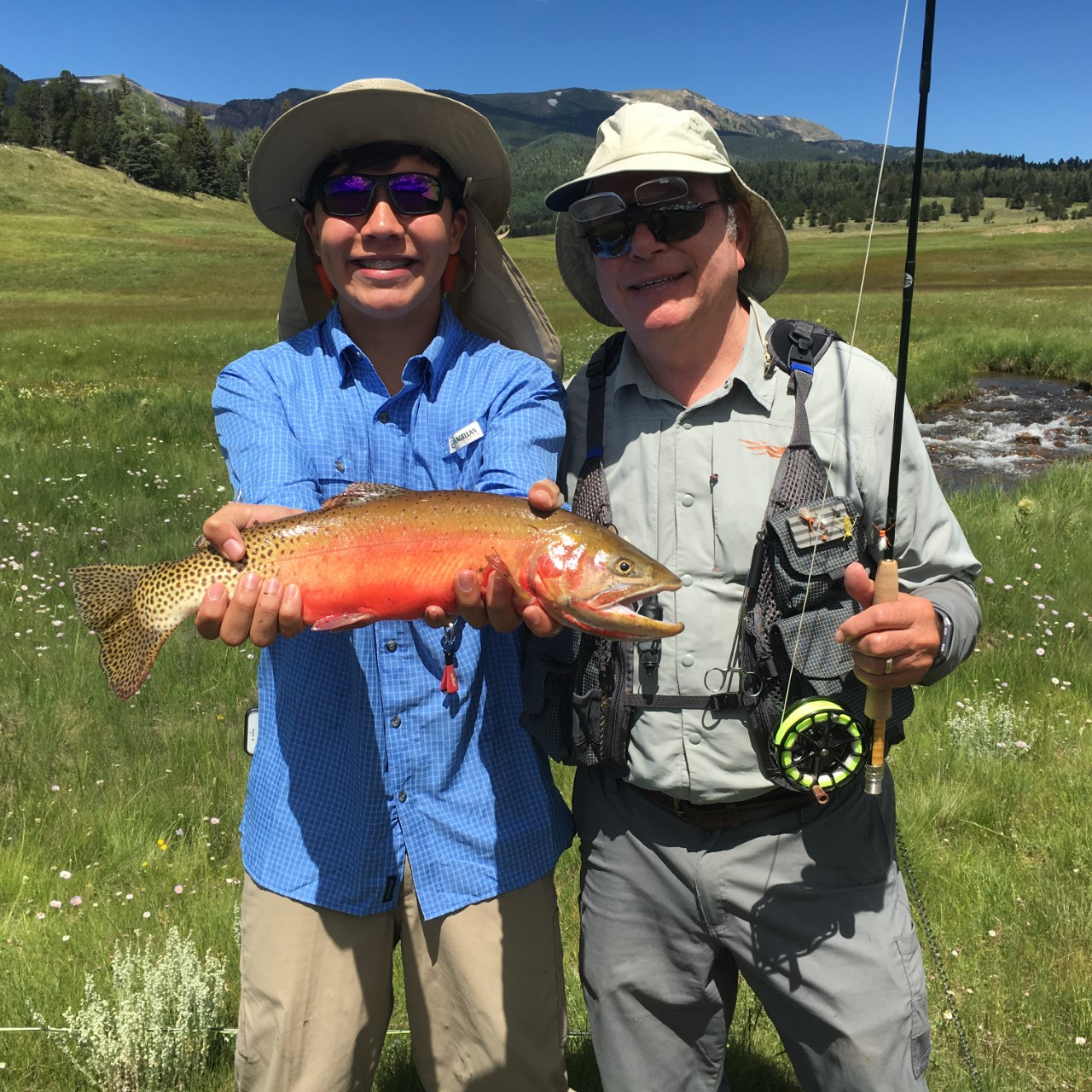
MPrinciple Investigators
- Dr. Zachary Klein, New Mexico State University
- Dr. Carter Kruse, Turner Institute of Ecoagriculture
Graduate student.
- Maret Smith-Miller, MS
Rationale. Rio Grande cutthroat trout currently occupy about 12% of their historical distribution. To restore Rio Grande Cutthroat Trout natural resource management agencies have instituted various conservation efforts including habitat restorations, species reintroductions, and removal of deleterious nonnative fish. These conservation efforts have been successful as evidenced by a 6.2% increase in the number of populations. However, conservation questions remain, including the value of high mountain lakes in conservation planning. Rio Grande cutthroat trout have been stocked into previously fish-less lentic systems throughout their distribution. For instance, there are currently 16 lakes in the upper Rio Costilla watershed at Vermejo Park Ranch that now support or could potentially be stocked with Rio Grande cutthroat trout. These systems can serve as important refugia populations. Additionally, many of the lakes provide important fisheries that help to increase angler’s appreciation for the species and support for conservation efforts. Unfortunately, Rio Grande cutthroat trout populations in lakes have received relatively little attention. Baseline population demographics and dynamics data for lentic populations is largely lacking. These data are necessary for understanding how lentic populations function and for guiding management actions. Furthermore, population-level data can help to identify potential threats (e.g., unsuitable habitat, overexploitation) to the persistence of these critically important populations.
8. Survivorship and habitat use of reintroduced bolson tortoises in southern New mexico
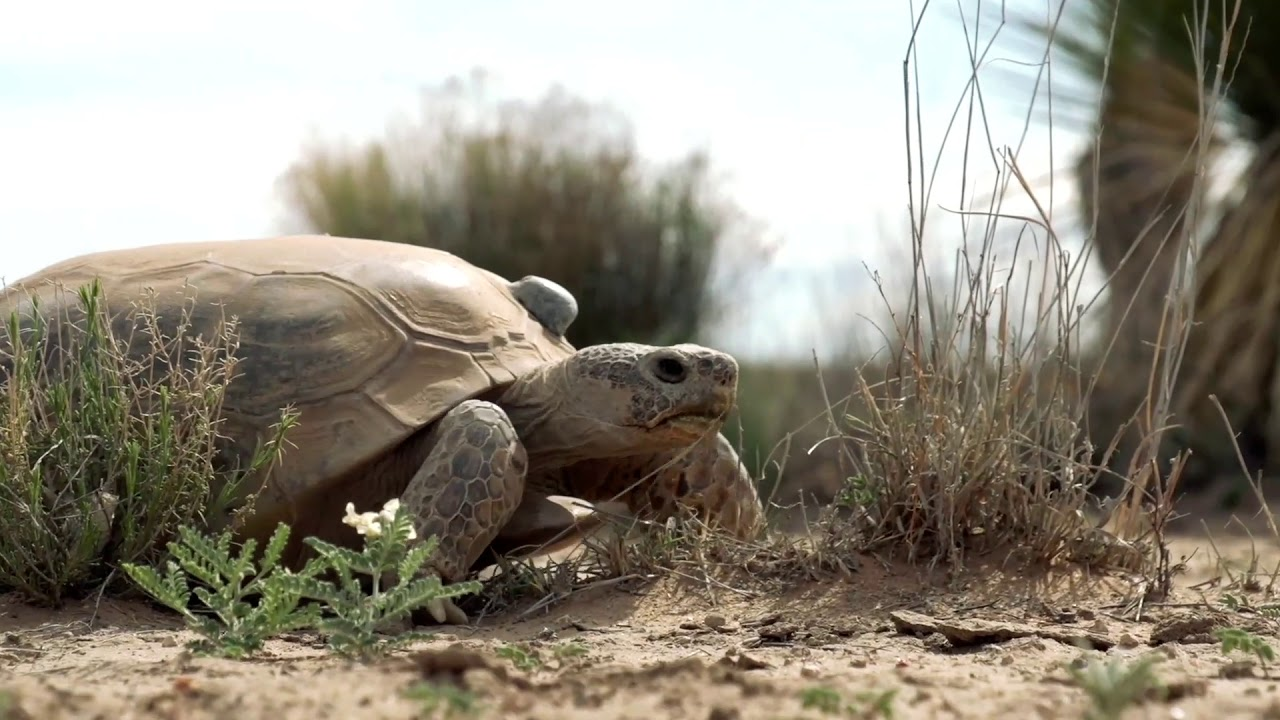
NPrinciple Investigators
- Dr. Abby Lawson, New Mexico State University, NM Cooperative Fish and Wildlife Research Unit
- Dr. Magnus McCaffrey, Turner Institute of Ecoagriculture
Graduate student.
- Heather Zimba, MS
Rationale. The Bolson tortoise is the largest and rarest of the six Gopherus species native to North America. Today, however, fewer than 2,500 individuals remain in the wild, all of which are restricted to discontinuous basins in the Mapimí sub-province of north-central Mexico, representing 90% extirpation from their Pleistocene range. The Turner Endangered Species Fund (TESF) operates the only large-scale ex situ breeding program aimed at conserving the tortoise and establishing assurance populations in the United States. TESF biologists released 45 juvenile tortoises on the Armendaris Ranch in 2021, with plans to release additional individuals in 2022 and 2023. Several critical uncertainties exist regarding how to maximize the success of future reintroductions. Evaluating the relationship between size and survival and identifying the size at which survivorship of released tortoises is similar to captive tortoises could maximize the benefits of captive rearing (e.g., protection from predators, supplemental food) and success of the reintroduction program. Further, understanding habitat use and activity patterns of free-ranging tortoises could help identify additional suitable habitat for future reintroduction sites. Reducing these uncertainties has the potential to reduce costs associated with maintaining a captive breeding colony, while maximizing the probability of persistence for the released tortoises.
9. Evaluation of cougar predation and bear kleptoparasitism on Vermejo park Ranch, New Mexico
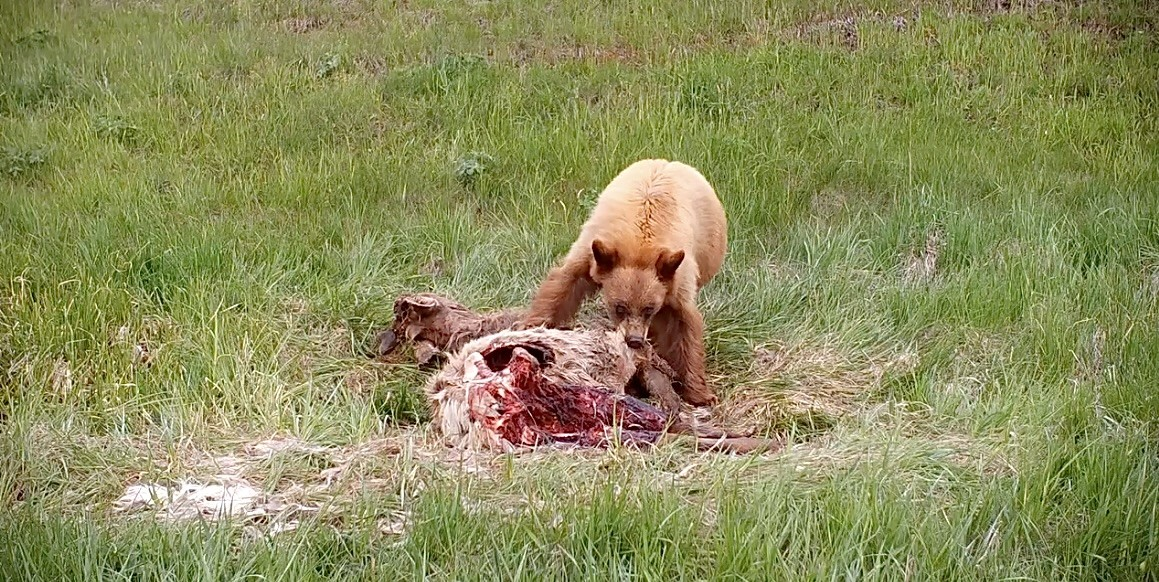
Principle Investigators
- Dr. Robert Lonsinger, Oklahoma State University, OK Cooperative Fish and Wildlife Research Unit
- Dr. Jimmy Cain, New Mexico State University, NM Cooperative Fish and Wildlife Research Unit
- Dr. Carter Kruse, Turner Institute of Ecoagriculture
- Lance Bernal, Vermejo Park Ranch
Graduate student.
- Aaron Cajero, MS
Rationale. Over the last 15 years, in response to drought, declining range and riparian conditions, and projected dry conditions in the future, Vermejo Park Ranch has tried to determine the carrying capacity for large ungulates (e.g., elk and American bison) on the ranch during an average dry year. While ecological balance with forage resources is the driving factor in setting elk population objectives at Vermejo, a sustainable elk hunting program, wildlife viewing opportunities, and overall ecological function, including healthy populations of predators, are also important considerations. Understanding large predator populations and their role in regulating elk (and other ungulate) populations is an important, but relatively unexplored question at Vermejo. Predators at Vermejo include black bears and cougars. Black bear predation can be a primary source of mortality on elk calves. Similarly, cougars, especially males, select for elk calves during summer months. Black bears may benefit from, and negatively affect cougars, through kleptoparasitism of cougar kills; for example, cougar kill rates can increase by 48% with the presence of black bears. Elevated cougar kill rates, combined with direct predation by black bears, could affect recruitment in ungulate populations. The Institute is undertaking this study to document cougar prey selection on Vermejo and the influence of bear kleptoparasitism on frequency and volume of cougar prey. This information will provide insights on the magnitude of elk and mule deer killed by cougars annually and inform future wildlife management decisions.
10. Relative survival and contribution of different source stocks to restoration of westslope cutthroat trout in cherry creek, Madison county, Montana
Principle Investigators
- Dr. Andrew Whiteley, University of Montana
- Dr. Ryan Kovach, University of Montana
- Dr. Donovan Bell, Montana Fish Wildlife and Parks
- Dr. Carter Kruse, Turner Institute of Ecoagriculture
Rationale. Embryos from five wild or hatchery populations were used to establish a population of westslope cutthroat trout in the renovated (i.e., piscicide treatment) habitat of upper Cherry Creek with the hypothesis that embryos from source populations in habitats that more closely matched Cherry Creek would survive better. Further, there is a growing body of evidence that source populations with increased genetic diversity will have higher survival. Tissue samples have been collected from multiple generations of growing population of cutthroat trout in Cherry Creek. The Institute will use these samples to further test the hypothesis that genetic diversity of source individuals is a key component for successful establishment of native trout populations in new or renovated habitats.
11. Ecosystem impacts associated with establishing blowout penstemon habitat in the Sandhills of Nebraska
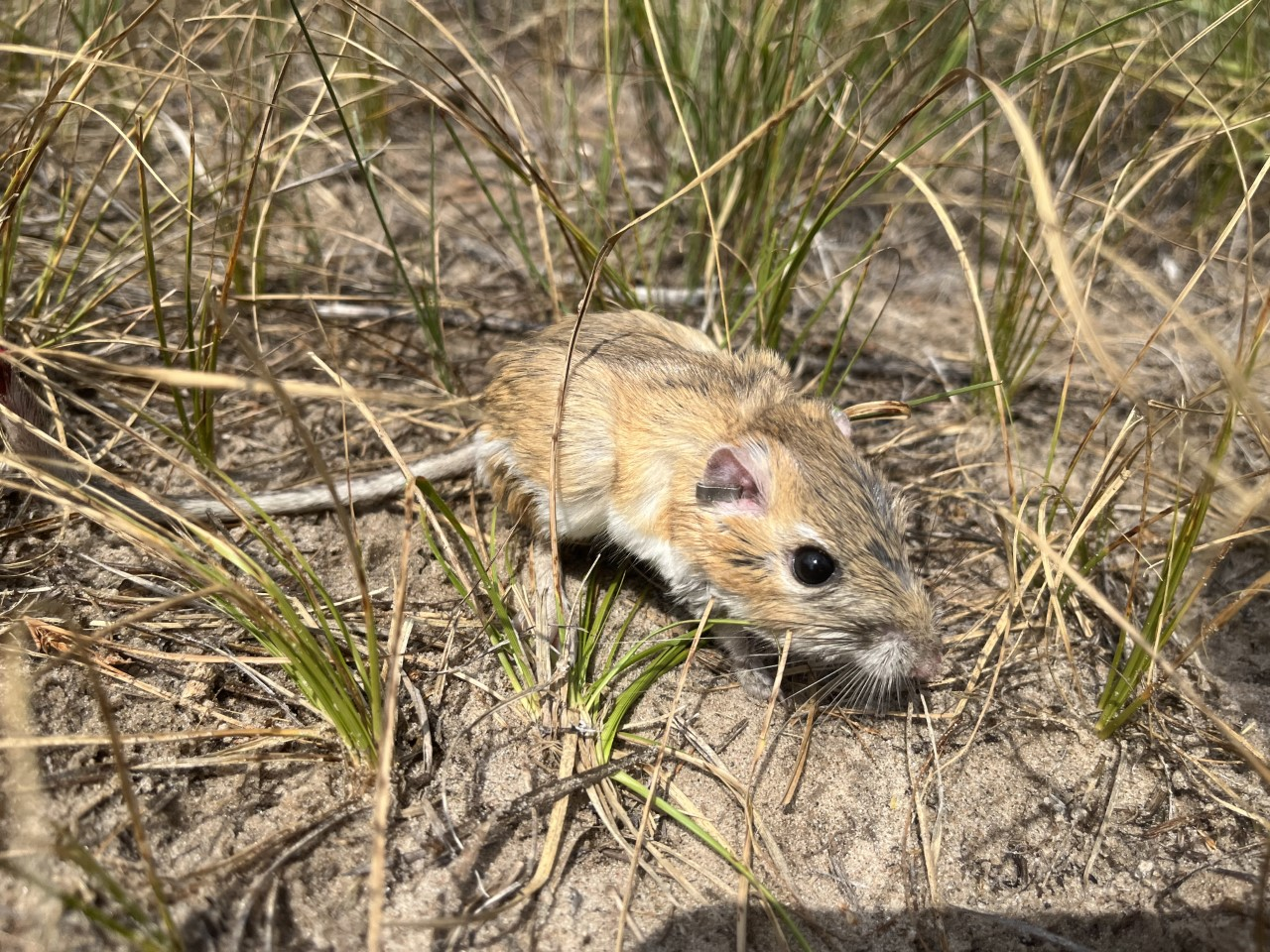
Principle Investigators
- Dr. Keith Geluso
- Dr. Carter Kruse, Turner Institute of Ecoagriculture
Graduate student.
- Levi Fettig, MS
Rationale. Blowout penstemon is considered an endemic, successional species found only in and around sand blowouts in western Nebraska and eastern Wyoming. Historically, blowout penstemon was common across the Nebraska Sandhills, but in 1987 the species was listed as endangered species and is currently known as the “rarest species native to the Great Plains region”. Today, only a few small populations remain, primarily due to sand dune stability which is likely the result of current moisture patterns and modern grazing patterns in the Sandhills. Thus, restoration and conservation of this penstemon species requires development of suitable habitat by managing (e.g., grazing, mechanical, etc.) for disturbance that creates bare and blowing sand. Historically widespread, today these sand blowouts represent a microhabitat in a grassland landscape. Ecologically, penstemon habitat may be important for other groups or communities of species adapted to this early successional habitat. The Institute is conducting this project to measure the potential impacts of creating small scale, isolated blowout habitats on the small mammal community, as well as other terrestrial and avian species.
12. Long-term prairie grouse lek durability and population size trends in relation to grazing management and climate
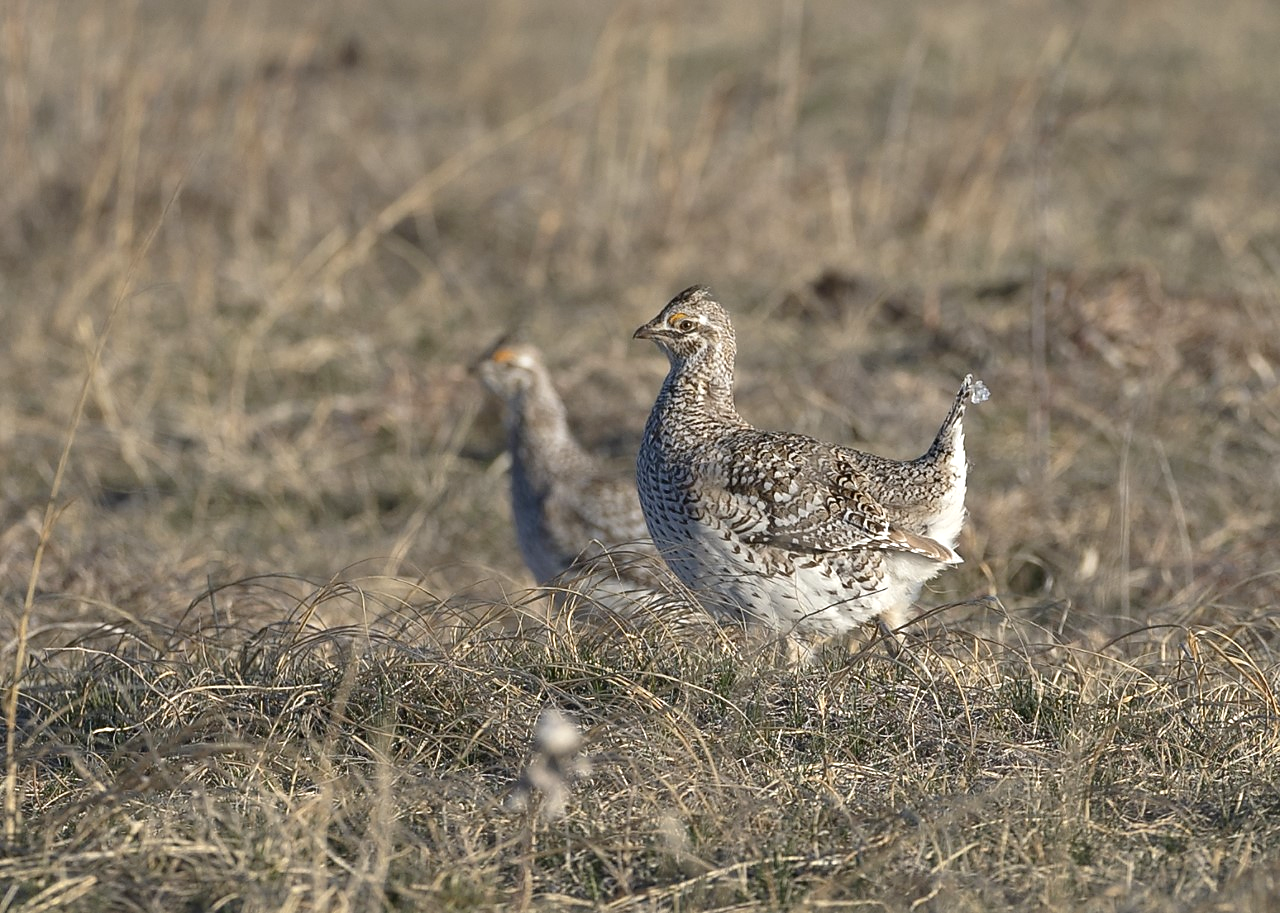
Principle Investigators
- Dr. Carter Kruse, Turner Institute of Ecoagriculture
- Tyrell McClain, Turner Institute of Ecoagriculture
Rationale. Grassland bird communities are one of the fastest declining taxa in North America, primarily due to habitat conversion. Prairie grouse (e.g., sharp-tail and prairie chickens) require large tracts of prairies and can be an overall indicator of grassland habitat intactness, heterogeneity, and quality. The Institute is initiating a long-term lek monitoring project at our McGinley Ranch to better understand the response of prairie grouse to bison grazing management and climate patterns. Outcomes from this work could help improve grazing practices in relation to climate variables to promote and sustain prairie grouse as well as other grassland bird species.
13. Fipbits: testing a novel insecticide delivery system to combat bubonic plague in prairie dog colonies
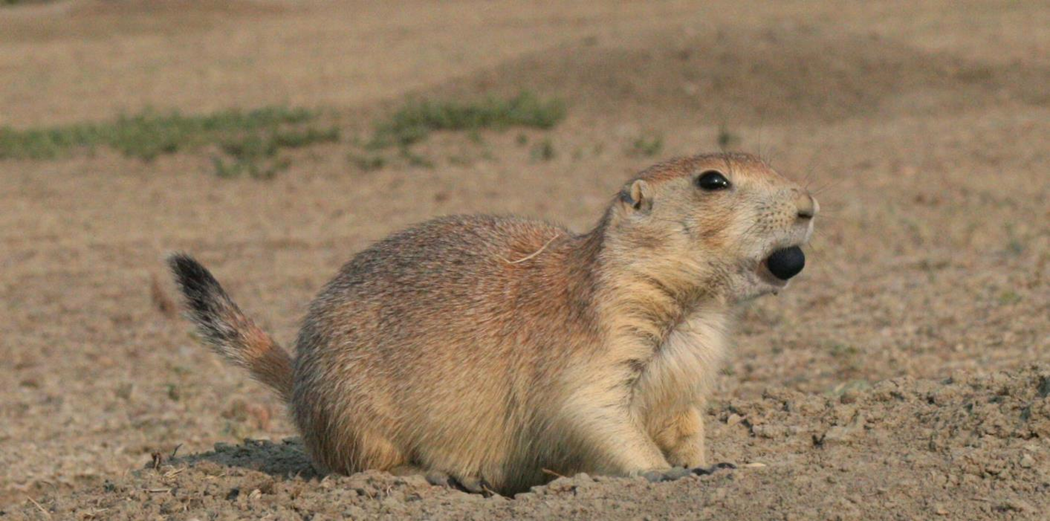
Principle Investigators.
- Dr. Magnus McCaffrey, Turner Institute of Ecoagriculture
- Randy Matchett, Charles M. Russell National Wildlife Refuge (CMR)
Rationale. The primary purpose of this project is to conduct field evaluation of a promising new management tool, bait pellets containing fipronil (FipBits), for mitigating the impact of plague in prairie dog and ferret populations. Plague is the primary biological challenge to black-footed ferret recovery. Thus, developing and implementing effective plague management tools is essential for downlisting and delisting of this endangered species. Existing methods of flea control (plague vector) – e.g., deltamethrin dust or sylvatic plague vaccine (SPV) – have limitations. A fipronil-based alternative may offer an efficient and more cost-effective option. Treatment of prairie-dog colonies by distributing 0.25 to 0.5 cups of grain (wheat) treated with 0.005% fipronil at each prairie-dog burrow has proven highly effective for flea control, but expensive. USFWS biologist Randy Matchett has invented a novel bait pellet (FipBits), whereby small amounts of fipronil are combined with inexpensive, all food-grade ingredients. By coupling mass-production capabilities and low-cost, practical, and efficient bait-pellet distribution technologies, FipBits bring together a combination that has the potential to substantially reduce flea-control costs. FipBits have been evaluated on small test plots in South Dakota, Montana, and Arizona, where near-complete flea control was achieved one-year post-FipBit treatment on most plots and in some cases, two years post-treatment. These preliminary findings are highly encouraging and underscore the potential utility of FipBits for controlling the primary vector of plague in prairie-dog and ferret populations. Expanded field trials are needed. This research aims to conduct FipBit evaluation on at least one Turner property as part of a collaborative effort to evaluate if larger-scale and widespread FipBit treatments have the same or better level of plague prevention in comparison to more expensive treatments. If FipBit effectiveness can be demonstrated through these field trials, FipBits could dramatically improve plague-mitigation efforts and consequently significantly advance ferret recovery.
